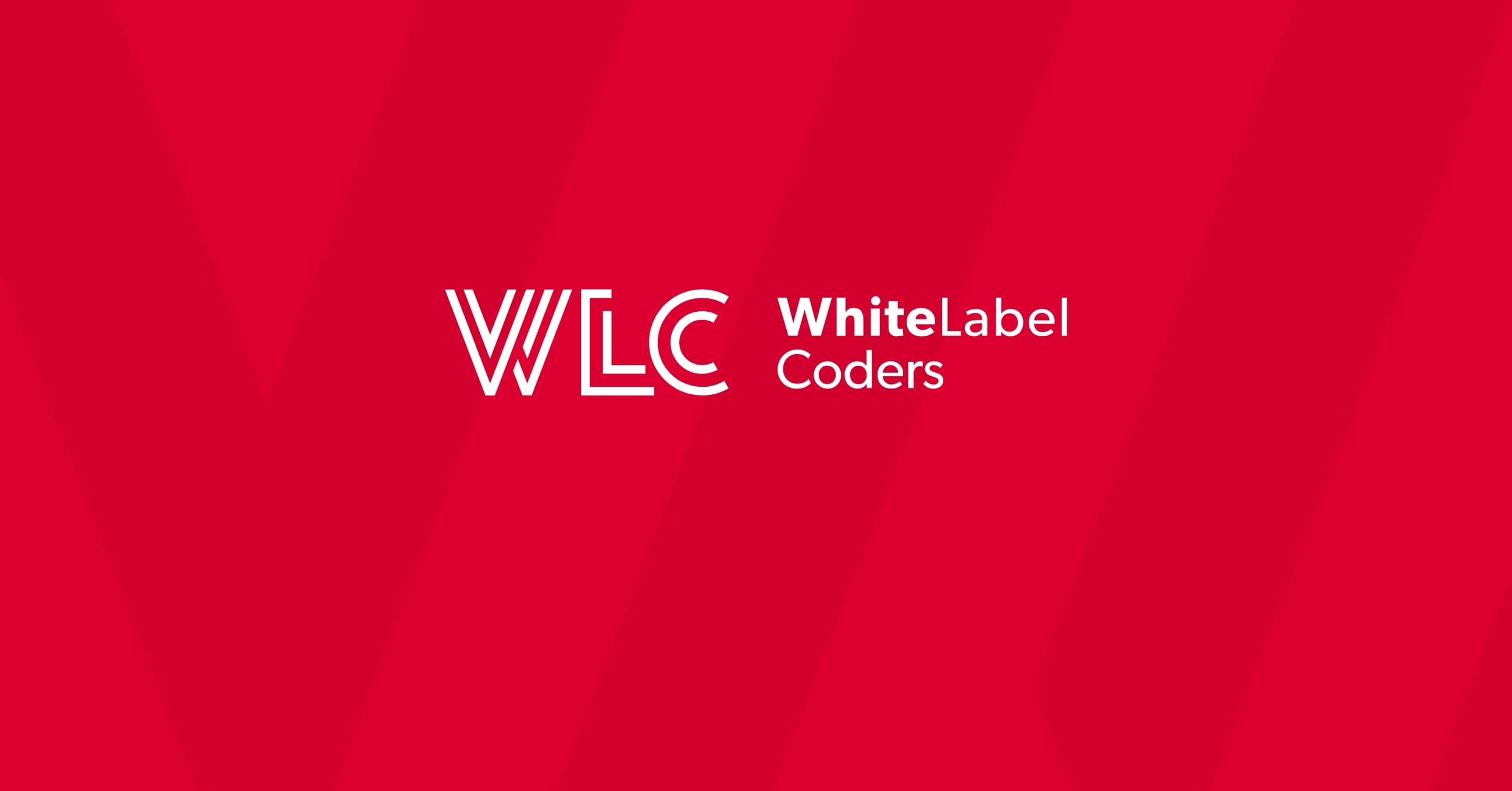Category: WooCommerce
How do you get paid on WooCommerce?

Understanding WooCommerce payments: Your complete guide to getting paid
Successfully running an online store requires more than just great products—it demands a seamless payment process that converts browsers into buyers. Setting up your WooCommerce payment system correctly is arguably the most critical aspect of your e-commerce operation. Without it, even the most beautifully designed store with compelling products won’t generate revenue.
The WooCommerce payment ecosystem offers remarkable flexibility, allowing store owners to accept payments through numerous gateways while maintaining control over the entire transaction process. Whether you’re launching a new store or optimizing an existing one, understanding the full spectrum of payment options is essential for maximizing conversions and ensuring business continuity.
DIFFICULTY LEVEL: Intermediate – While no coding knowledge is required, you’ll need familiarity with WordPress administration and basic WooCommerce configuration.
TIME REQUIREMENT: Setting up your complete payment system typically takes 3-5 hours, spread across 1-2 days, allowing time for account verifications and testing.
USEFUL TOOLS:
- WooCommerce core plugin (latest version)
- SSL certificate (for secure transactions)
- Payment gateway plugins (PayPal, Stripe, etc.)
- Test credit cards (for payment simulation)
- A staging environment (optional but recommended)
This guide will walk you through selecting appropriate payment gateways, configuring them correctly, ensuring compliance, and optimizing the entire payment process to enhance your store’s conversion rate.
Essential requirements: What you need before setting up payments
Before diving into payment gateway configuration, ensure your store foundation is solid. Proper preparation prevents frustrating roadblocks and security vulnerabilities that could compromise your business operations.
Here’s what you need in place before proceeding:
- Active WooCommerce installation – Your store should be running on the latest version of WordPress and WooCommerce. Outdated software can create security vulnerabilities in your payment system.
- Quality hosting environment – Payment processing requires reliable hosting with good uptime and performance metrics. Slow loading times directly impact checkout conversion rates.
- SSL certificate – This is non-negotiable. Payment processors require HTTPS for secure data transmission, indicated by the padlock icon in browsers. Without this, payment gateways will refuse to operate on your site.
- Business documentation – Prepare your business registration, tax identification numbers, and banking information. Payment processors typically require verification of your business identity.
- Compliance readiness – Familiarize yourself with PCI DSS (Payment Card Industry Data Security Standard) requirements and relevant regional regulations like GDPR for European customers.
Pro tip: Use a staging environment to configure and test payment gateways before implementing them on your live store. This prevents potential disruptions to your actual sales process.
Step 1: Choose the right payment gateways for your business
Selecting appropriate payment gateways is a strategic decision that impacts both your operational efficiency and customer satisfaction. The right mix of payment options can significantly improve conversion rates by catering to customer preferences.
| Payment Gateway | Best For | Transaction Fees | Setup Complexity |
|---|---|---|---|
| WooCommerce Payments | Simplicity & integration | Standard (2.9% + $0.30) | Low |
| PayPal | Global recognition | Standard (2.9% + $0.30) | Low |
| Stripe | Customization & features | Standard (2.9% + $0.30) | Medium |
| Square | Omnichannel retail | Standard (2.9% + $0.30) | Medium |
Consider these factors when making your selection:
- Customer location – Different regions prefer different payment methods. Research your target market’s preferences.
- Transaction fees – Compare the fee structures across gateways, considering both percentage and fixed fees.
- Settlement time – How quickly funds are transferred to your bank account varies between providers.
- Integration depth – Some gateways offer deeper integration with WooCommerce, providing better reporting and management features.
- Supported currencies – If you sell internationally, ensure your gateway supports the currencies you need.
Most successful WooCommerce stores use a primary gateway complemented by 1-2 alternatives to maximize payment accessibility and minimize disruption if one gateway experiences issues.
Step 2: Install and configure your primary payment gateway
Once you’ve selected your primary payment gateway, it’s time to install and configure it properly. We’ll use WooCommerce Payments as an example, as it’s deeply integrated with the WooCommerce ecosystem and offers a streamlined setup process.
Installing the payment gateway plugin
- Navigate to WooCommerce → Settings → Payments in your WordPress dashboard
- Click “Add payment method” if WooCommerce Payments isn’t already listed
- Find WooCommerce Payments in the available gateways and click “Install”
- Once installed, click “Setup” to begin configuration
Configuring basic settings
- Connect to your WordPress.com account or create one if needed
- Complete the business verification process by providing:
- Legal business name
- Business address
- Tax identification number
- Banking information for deposits
- Configure payment display options:
- Payment method title (what customers see at checkout)
- Payment method description
- Enable/disable test mode (start with test mode enabled)
Setting up API connections
For gateways like Stripe or PayPal, you’ll need to establish API connections:
- Create an account with the payment provider if you don’t have one
- Locate API keys in your payment provider dashboard (typically under Developers or API sections)
- Copy both publishable/public key and secret key
- Paste these keys into the corresponding fields in your WooCommerce gateway settings
- Save your settings
Important: Always start with test mode enabled and test API keys. Only switch to live keys after confirming everything works properly.
Step 3: Set up additional payment methods for maximum conversion
Diversifying payment options increases your chances of capturing sales from customers with different preferences. Modern consumers expect various payment choices beyond traditional credit cards.
Implementing digital wallets
Digital wallets like Apple Pay and Google Pay offer convenience and faster checkout:
- Check if your primary gateway supports digital wallets (Stripe and WooCommerce Payments do natively)
- Enable these options in your gateway settings
- Configure display settings to make these options visible at checkout
- Test the functionality on both mobile and desktop devices
Adding local payment methods
If you serve specific regions, consider adding local payment preferences:
- For European customers: SEPA Direct Debit, Sofort, iDEAL
- For Asian markets: Alipay, WeChat Pay
- For Latin America: Boleto, Oxxo
These can typically be enabled within major gateways like Stripe or through specific regional gateway plugins.
Offering buy-now-pay-later options
Financing options can significantly increase average order value:
- Research BNPL providers compatible with WooCommerce (Klarna, Afterpay, Affirm)
- Install the relevant gateway plugin
- Complete the merchant application process
- Configure the display options and payment terms
- Test the customer experience through the entire payment flow
Remember that each additional payment method requires maintenance and monitoring, so focus on methods that align with your customer preferences rather than implementing every possible option.
Step 4: Configure your tax settings for compliance
Proper tax collection is crucial for regulatory compliance and avoiding costly penalties. WooCommerce offers several approaches to tax management.
Setting up basic tax rules
- Go to WooCommerce → Settings → Tax
- Choose your tax calculation method (based on customer shipping address, billing address, or shop base address)
- Set prices to be inclusive or exclusive of tax based on your business model
- Configure tax display options in the cart and checkout
Creating tax rate tables
For manual tax configuration:
- Navigate to the “Standard Rates” tab
- Add tax rates for each jurisdiction where you need to collect taxes
- Specify country, state, postal code, city, and rate percentage
- Set tax class (standard, reduced, zero)
- Consider using CSV import for bulk tax rate setup
Implementing automated tax services
For more accurate and maintenance-free tax management:
- Consider automated services like WooCommerce Tax, Avalara, or TaxJar
- Install the relevant integration plugin
- Connect your account with the tax service
- Configure settings to automatically calculate and apply correct tax rates based on transaction details
Tax regulations change frequently. Using an automated service can help ensure ongoing compliance without constant manual updates.
Step 5: Establish your payout schedule and withdrawal methods
Understanding how and when you’ll receive funds is critical for cash flow management. Each payment gateway handles this differently.
Configuring settlement timeframes
- Review your payment gateway’s default settlement periods (typically 2-7 business days for new accounts)
- Check if expedited payouts are available (some gateways offer this for an additional fee)
- Set up payout frequency if customizable (daily, weekly, monthly)
- Note settlement cut-off times that determine which payment batch your transactions fall into
Connecting bank accounts for transfers
- Add your business bank account details to your payment gateway dashboard
- Complete any required verification processes (micro-deposits, documentation)
- Set this account as your default payout destination
- Configure currency conversion settings if you accept multiple currencies
Understanding payout thresholds and fees
Be aware of these potential limitations:
- Minimum payout thresholds (some gateways hold funds until you reach a minimum amount)
- Transfer fees (flat fees for moving money to your bank)
- Currency conversion fees (if applicable)
- Reserve requirements (some gateways may hold a percentage of your funds as a risk management measure)
Monitoring your payout schedule regularly ensures you can identify and resolve any issues with fund transfers before they impact your business operations.
Step 6: Implement security measures to protect transactions
Payment security is non-negotiable for both regulatory compliance and customer trust. Implementing robust security measures protects your business and customers from fraud and data breaches.
Enabling address verification services (AVS)
- Access your payment gateway settings
- Locate fraud prevention or security settings
- Enable address verification to match billing address with card issuer records
- Configure how strictly to enforce matches (reject on mismatch or flag for review)
Implementing CVV verification
- Ensure CVV verification is enabled in your payment gateway
- Make the CVV field required at checkout
- Configure rejection settings for transactions with incorrect CVV codes
Setting up fraud detection tools
- Research fraud prevention plugins compatible with your payment gateway
- Consider services like Signifyd, NS8, or gateway-provided tools
- Implement risk scoring based on transaction patterns
- Create rules for automatically holding suspicious orders for review
Maintaining PCI compliance
- Use payment gateways that handle card data on their servers rather than yours when possible
- Complete any required PCI self-assessment questionnaires
- Implement regular security scans if required by your payment processor
- Keep WooCommerce, WordPress, and all plugins updated to patch security vulnerabilities
Balancing security with user experience is critical—overly restrictive measures can reduce conversion rates, while insufficient protection exposes you to fraud losses.
Step 7: Test your payment system thoroughly
Before going live, comprehensive testing ensures your payment system functions correctly and provides a smooth customer experience.
Conducting test transactions
- Enable test mode in your payment gateway settings
- Use test card numbers provided by your payment gateway (typically available in their documentation)
- Process transactions with various payment methods and amounts
- Verify that orders are created correctly in your WooCommerce dashboard
- Confirm test payments appear in your payment gateway dashboard
Verifying the checkout flow
- Complete the entire purchase process as a customer would
- Test on multiple devices (desktop, tablet, smartphone)
- Check all form fields function correctly
- Verify error messages are clear and helpful
- Ensure confirmation emails are received promptly
Testing order fulfillment process
- Confirm order status updates correctly after payment
- Check that inventory adjusts automatically if enabled
- Verify that order details are accurate in your admin dashboard
- Test the refund process for both full and partial refunds
Only after thorough testing should you switch to live mode by updating your API credentials and disabling test mode in your payment gateway settings.
7 expert techniques to optimize your WooCommerce payment process
Beyond basic setup, these advanced strategies can significantly improve your conversion rates and streamline your payment workflow.
1. Implement one-click checkout
Allow returning customers to check out without re-entering payment details by:
- Enabling saved payment methods in your gateway settings
- Implementing tokenization for secure card storage
- Creating guest checkout flows that still offer convenience
2. Design strategic cart abandonment recovery
Recover lost sales with automated follow-ups:
- Implement WooCommerce performance plugins to capture email addresses before checkout completion
- Set up automated email sequences with increasing incentives
- Include direct links back to the abandoned cart for easy recovery
3. Create intelligent coupon systems
Use discounts strategically:
- Implement exit-intent popups with limited-time discount codes
- Create tiered discount systems based on cart value
- Design first-time purchase incentives
4. Optimize checkout page design
Remove friction from the payment process:
- Minimize form fields to essential information only
- Add progress indicators for multi-step checkouts
- Implement inline field validation to catch errors immediately
- Display trust badges and security indicators prominently
5. Implement smart cross-selling
Increase order values during checkout:
- Add strategic product recommendations on the cart page
- Offer order bumps at checkout for complementary products
- Create bundle discounts for frequently purchased combinations
6. Add payment-specific promotions
Incentivize preferred payment methods:
- Offer small discounts for using lower-fee payment methods
- Create special financing terms for higher-value purchases
- Implement loyalty point bonuses for specific payment types
7. Enable automatic currency conversion
Support international customers:
- Display prices in the customer’s local currency
- Implement geolocation-based currency switching
- Allow customers to manually select their preferred currency
These advanced techniques build upon your basic payment setup to create a more engaging and effective checkout experience that maximizes revenue opportunities.
Troubleshooting payment failures: Solutions to common WooCommerce issues
Even well-configured payment systems occasionally encounter problems. Knowing how to diagnose and resolve common issues quickly minimizes lost sales and customer frustration.
| Problem | Possible Causes | Solution |
|---|---|---|
| Gateway connection errors | Invalid API credentials, server connectivity issues | Verify API keys, check server connection to gateway endpoints, ensure SSL is working properly |
| Declined transactions | Insufficient funds, fraud triggers, incorrect card details | Check gateway logs for specific decline reasons, adjust fraud settings if too strict, ensure checkout form validates properly |
| Orders stuck in “pending” status | Webhook failures, IPN configuration issues | Verify webhook URLs are correct and accessible, check server logs for callback failures, test IPN connectivity |
| Payment methods not displaying | Configuration issues, compatibility problems | Check payment gateway settings, verify theme compatibility, disable conflicting plugins temporarily to isolate the issue |
Diagnosing transaction failures
When payments fail, follow these steps to identify the cause:
- Check payment gateway logs for specific error codes
- Review WooCommerce status logs (WooCommerce → Status → Logs)
- Attempt to replicate the issue in a controlled test environment
- Verify the customer’s provided information for obvious errors
Resolving integration conflicts
Plugin conflicts often cause payment issues:
- Temporarily deactivate non-essential plugins to isolate conflicts
- Ensure your theme is compatible with your payment gateway
- Check if JavaScript errors appear in browser console during checkout
- Verify that caching plugins aren’t interfering with dynamic checkout processes
Always maintain a staging environment where you can safely troubleshoot payment issues without disrupting your live store.
Beyond basic payments: Advanced solutions for growing businesses
As your WooCommerce store grows, your payment needs will evolve. These advanced payment solutions address the complex requirements of scaling businesses.
Implementing subscription billing
For recurring revenue models:
- Install WooCommerce Subscriptions plugin or a compatible alternative
- Configure subscription intervals, trial periods, and billing cycles
- Set up automatic renewal notifications and failed payment handling
- Implement self-service management tools for subscribers
Creating recurring payment models
For membership sites and service-based businesses:
- Implement payment plans with automatic installments
- Configure metered billing for usage-based services
- Set up dunning management for failed recurring payments
- Create upgrade/downgrade paths between service tiers
Setting up marketplace payment distribution
For multi-vendor stores:
- Implement split payments to automatically distribute funds to vendors
- Configure commission models and payment schedules
- Set up tax handling for marketplace transactions
- Implement vendor onboarding and verification workflows
Planning international expansion
For global growth:
- Implement multi-currency support with appropriate exchange handling
- Research and implement region-specific payment methods
- Configure tax compliance for international jurisdictions
- Set up localized checkout experiences with appropriate language and currency
These advanced solutions typically require specialized plugins and custom development work, but they create scalable payment infrastructures that support business growth.
Your WooCommerce payment success plan: Implementing today and scaling tomorrow
Setting up effective payment processing in WooCommerce is a foundational step that impacts every aspect of your e-commerce business. The right configuration not only ensures you get paid reliably but also creates a seamless customer experience that encourages repeat business.
Remember these key principles as you implement your payment system:
- Start with the essentials – Implement a primary payment gateway with proven reliability before adding more complex options
- Test thoroughly – Every payment configuration change should be verified with real-world testing
- Prioritize security – Protection of payment data builds customer trust and shields your business from liability
- Optimize continuously – Regularly review your payment conversion metrics and refine your checkout process
- Plan for growth – Select payment solutions that can scale with your business goals
Implementation timeline:
- Day 1: Install and configure your primary payment gateway
- Day 2: Implement tax settings and conduct initial testing
- Day 3: Add secondary payment methods and security measures
- Day 4: Perform comprehensive testing and optimization
- Day 5: Launch your optimized payment system to customers
With the foundation laid in this guide, you’re well-equipped to create a payment system that not only enables transactions today but adapts to your evolving business needs. The flexibility of WooCommerce combined with strategic payment gateway choices positions your store for both immediate success and long-term growth.
Start implementing these steps today, and transform your WooCommerce store into a conversion-optimized sales machine that provides value to customers while steadily growing your business revenue.

